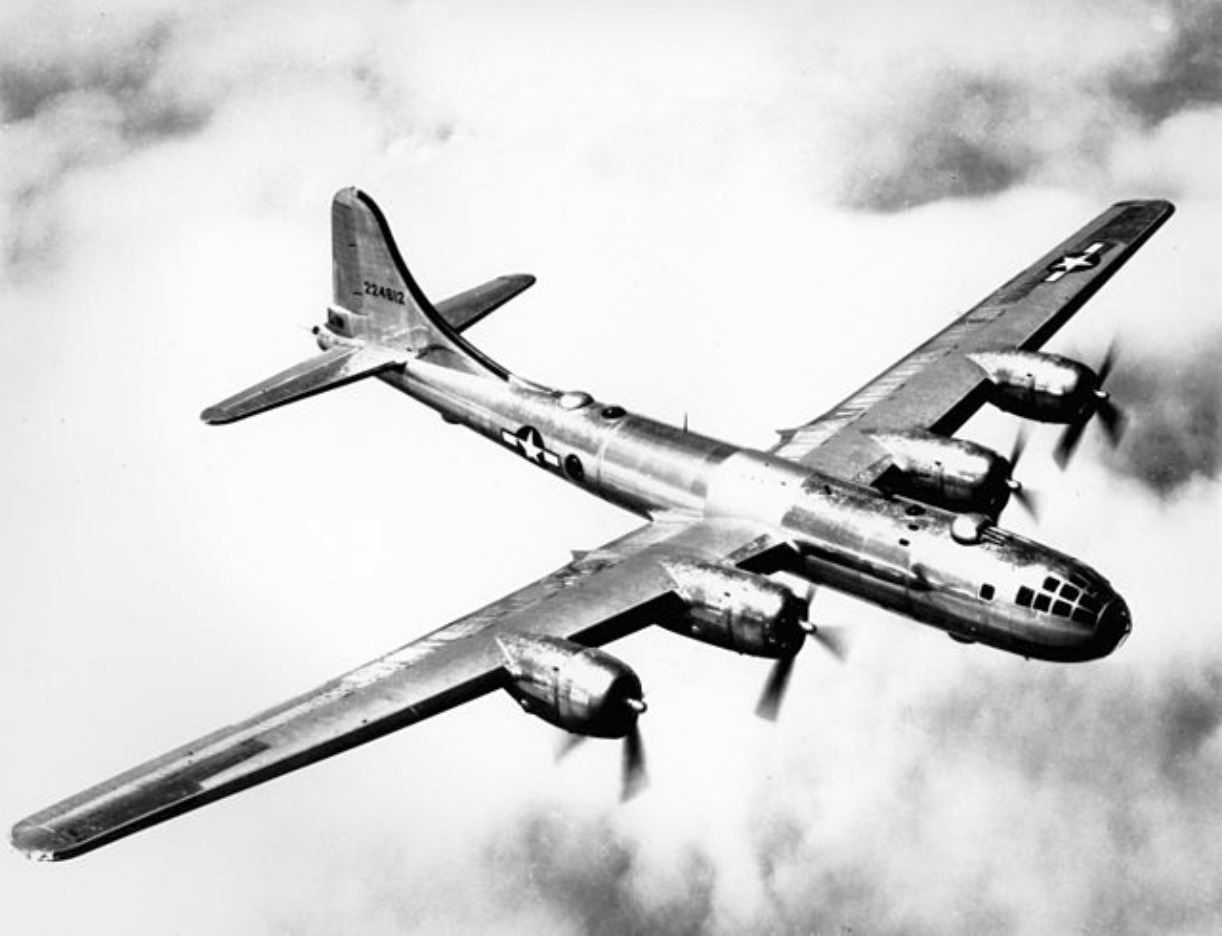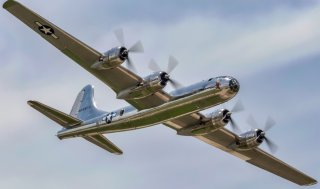Nearly 4,000 Built: The B-29 Bomber Changed History Forever
The American-made B-29 Stratofortress, designed to replace the B-17 and B-24, revolutionized aerial warfare with its long-range capabilities, pressurized cabins, and heavy payload. Known for dropping the first atomic bomb on Japan in 1945, the B-29 remains the only aircraft to have deployed nuclear weapons in combat.
What You Need to Know: The American-made B-29 Stratofortress, designed to replace the B-17 and B-24, revolutionized aerial warfare with its long-range capabilities, pressurized cabins, and heavy payload. Known for dropping the first atomic bomb on Japan in 1945, the B-29 remains the only aircraft to have deployed nuclear weapons in combat.

-With a 141-foot wingspan, the Stratofortress could carry up to 20,000 pounds of bombs, which proved critical in WWII’s Pacific Theater.
-Although nearly 4,000 B-29s were built, the most famous, Enola Gay, is preserved at the National Air and Space Museum, reminding generations of the bomber's historical significance.
B-29 Stratofortress: The WWII Bomber That Shaped Aviation History
The American-made B-29 “Stratofortress” is perhaps best remembered for its lasting role in the final campaign of the Second World War. When the long-range, heavy bomber delivered the first atomic bomb over Japan in 1945, it became the only aircraft to ever drop nuclear weapons in combat. While only two B-29s remain active in use for airshows today, the legendary bomber is widely respected among aviation buffs and military experts alike.
Introducing the Stratofortress
Designed as a replacement bomber for the B-17 Flying Fortress and B-24 Liberator, the Superfortress was built to last in the Pacific Theatre. As tensions between Japan and the U.S. were heating up pre-war, the United States Army Air Corps envisioned an airframe that could carry a much larger payload than previous bombers, more than 3,000 miles.
By the late 1930’s, the Air Corps issued a formal request for a new “super-bomber” and the big-name manufacturers of the time responded. Consolidated Aircraft, Lockheed Martin and Douglas all put forth their proposals but were ultimately beat out by Boeing.
The hefty airframe proposed by Boeing spanned 141 feet in length and featured a roughly twenty-eight foot long tail turret. The B-29s also had pressurized cabins, remote control gun placements and cutting-edge engines that enabled the bombers to fly at speeds in excess of 50 miles per hour. The bomber could carry up to 20,000 pounds of bombs in its two internal bomb bays. In several specialized aircraft, the space between the bomb bays was equipped with the APQ-13 or Eagle Bombing Through Overcast radar.

The airframe was truly a novelty when it was first introduced in the mid-1940’s. As remembered by a former B-29 pilot Robert Rodenhouse, "It just blew my mind. First of all its size, and then its capabilities. And to think that they could take an airplane, a bomber, and pressurize it so that we could feel the same at sea level as we do at 30,000 feet. And that's essentially what they were doing. And then when I knew that the range that it was capable of doing, and the weight and the bomb load, I couldn't wait to get behind the wheel."
Service History
During World War II, the Stratofortress proved to be the formidable bomber the U.S. military envisioned. As part of Operation Meetinghouse in springtime 1945, 324 B-29s attacked Tokyo in what would become the most destructive air raid in history. The Stratofortress was viewed as so successful that the Soviets even tried to copy it. During WWII, the USSR worked to build a similar heavy bomber that could rival the West. The resulting Tu-4 never became quite the bomber as the Stratofortress, however.
While nearly 4,000 B-29s were produced during the war, perhaps one Stratofortress is the most recognized. The infamous Enola Gay dropped the Little Boy atomic bomb on Hiroshima and today remains on display at the National Air and Space Museum in Washington D.C.
About the Author: Maya Carlin, Defense Expert
Maya Carlin, National Security Writer with The National Interest, is an analyst with the Center for Security Policy and a former Anna Sobol Levy Fellow at IDC Herzliya in Israel. She has by-lines in many publications, including The National Interest, Jerusalem Post, and Times of Israel. You can follow her on Twitter: @MayaCarlin.
Image Credit: Creative Commons and/or Shutterstock.


